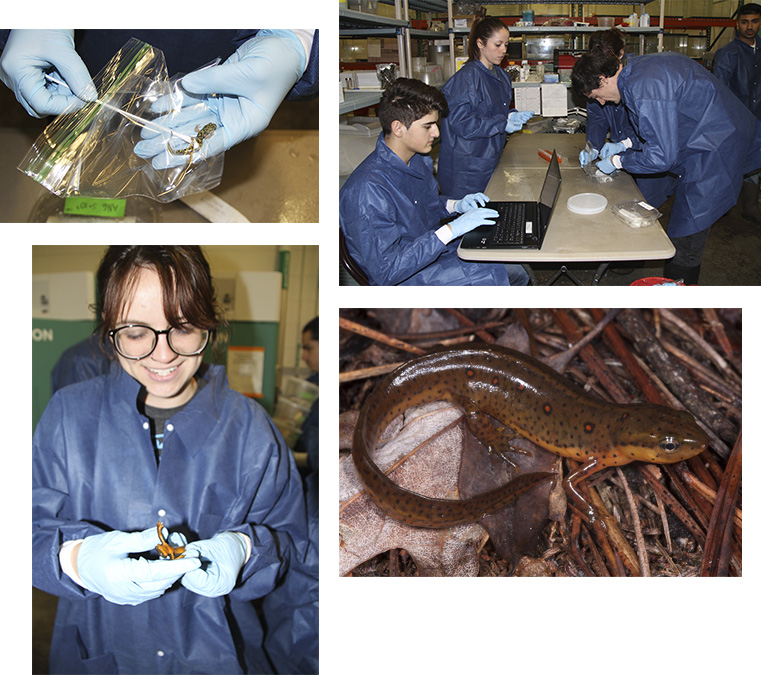Recent rates of extinction have caused some to question whether we are in the midst of Earth’s 6th mass extinction event. One of the most imperiled groups of animals is amphibians. Since the 1980s, as many as 122 amphibian species may have gone extinct. Another 1,896 species of frogs and salamanders are thought to be in imminent danger of extinction according to the IUCN. Pathogens, in particular viruses in the genus Ranavirus and fungi in the genus Batrachochytrium (B. dendrobatidis and B. salamandrivorans), have been implicated in global amphibian declines, ranging from location population declines and extirpations to species extinctions.
Our lab investigates how these pathogens threaten amphibian species. Using a combination of laboratory and mesocosm experiments and mathematical modeling, we evaluate host-pathogen interactions to advance understanding of the epidemiology of amphibian diseases, which is an essential step to identifying effective disease management strategies. By taking a transdisciplinary approach to research, we are able to investigate the epidemiology of amphibian pathogens across multiple scales of biological organization and use the power of mathematics to elucidate essential components of the disease process. Our research team includes microbiologists, veterinarians, immunologists, mathematicians and disease ecologists. We implement the tenets of Convergence Science to investigate the complexities of emerging infectious diseases and produce solutions that can be implemented by wildlife health and natural resource practitioners.



